A 2 Element 2 Meter Quad for DF and DX
By: WA7ABU - Dan Bathurst
Here is a two element quad portable antenna that we use for bunny hunts. It is good for any time you need a compact antenna that can be used on a 2 Meter rig. It allows a ham to hear signals that were not even there with the rubber duck. It originated with other hams and has evolved.
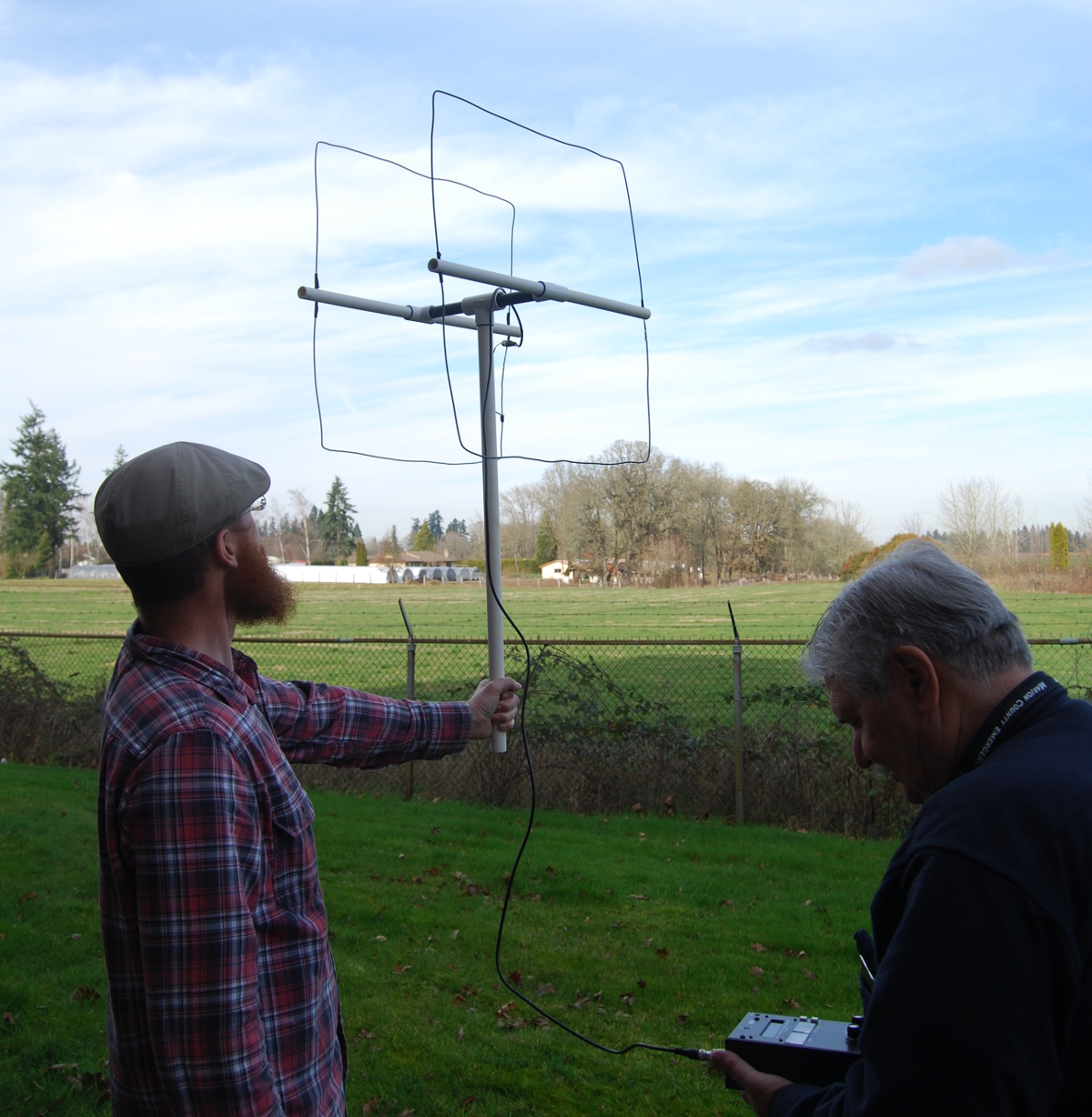
Materials List:
- 1 - 6 foot BNC extension coax RG-58u or better flexible 50 Ohm
- 2 - 88" pieces of 12 gauge Romex wire, insulated or bare copper
- 4 - 11" pieces of 1/2" white PVC pipe, any thickness
- 2 - 1/2" T's, slip joints on 2 ends, threaded on the side
- 1 - 30" (or your choice) piece of 3/.4 inch PVC schedule 40
- 1 - 3/4 " slip joint T, cut down the length if needed
- 1 - 1/2" sprinkler riser 10" long with 1/2" threaded ends
- 1 - Piece of 3/4" flexible black sprinkler pipe or tape for a shim
- 1 - BNC chassis mount socket for the BNC connection at the antenna
- 1 - 10" piece of insulated 14 gauge Romex wire for the matching section
Tools and Supplies:
- Drill bit on a drill for plastic
- Soldering iron - heavy type
- Rosin solder
- Plastic tape
- Hack saw and/or plastic pipe cutter
- Plastic PVC glue - optional
- Tape measure
- SWR meter or analyzer
Assembly
Center Support
Put the 3/4" pipe into the matching T and cut one wall of the T to allow the T to be stretched by the riser that is going inside. Some people use clamps around the T to tighten it to the riser. Shim the riser and make it fit tight inside the T and center it.

Elements:
Drill holes in 2 of the 11" pipes 1/2" in then 1 1/4" in on the other 2 pipes. Mount the pipes in the T's, with PVC glue, align the holes perpendicular to the threaded T entrance.
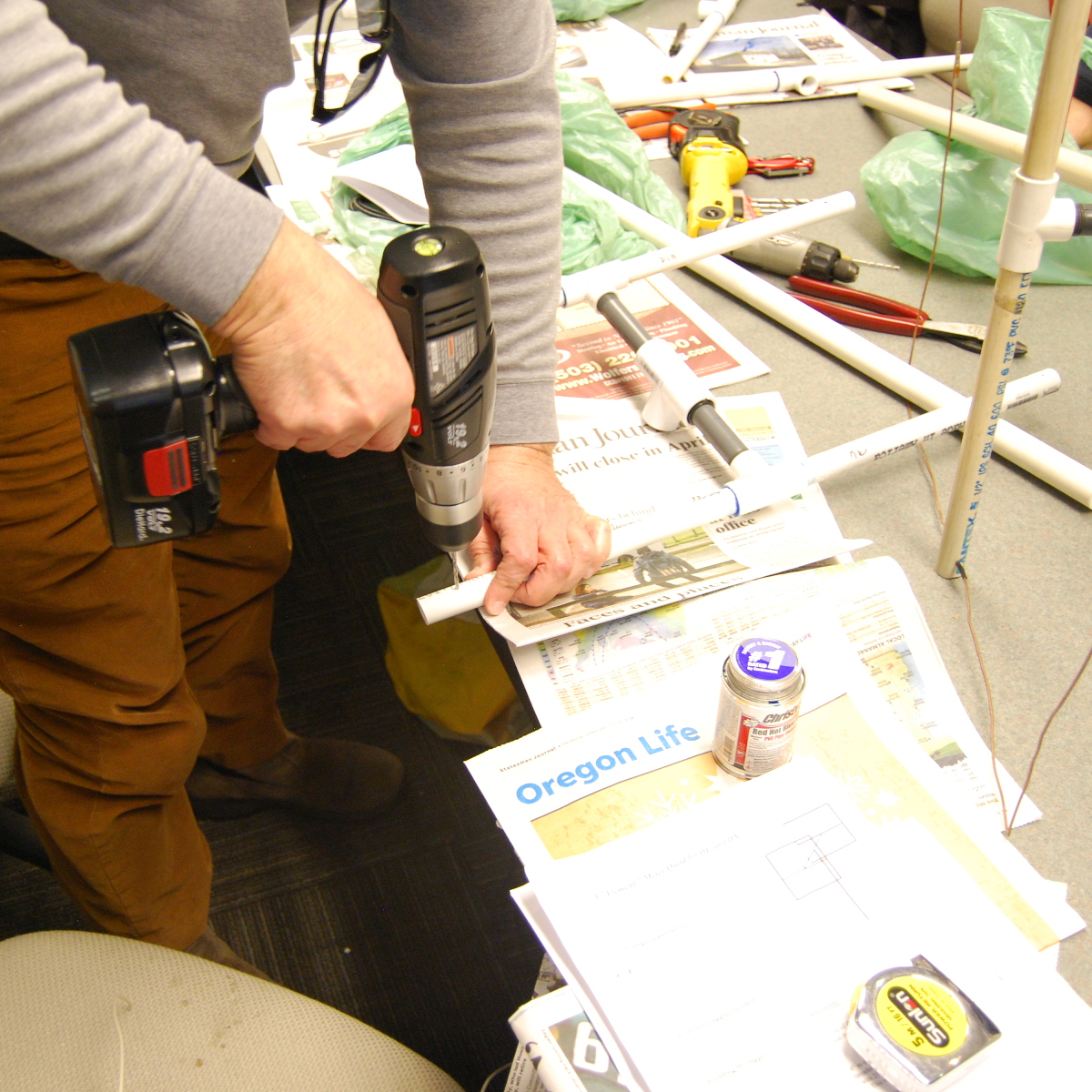
Thread the Romex wire through the holes of the pipes drilled 1/2" down, making the wire 21 1/2" on a side, and 22" on the soldered side to form a square. Our 2 Meter design calls for a 86 1/2" reflector and a 80 3/4" driven element.
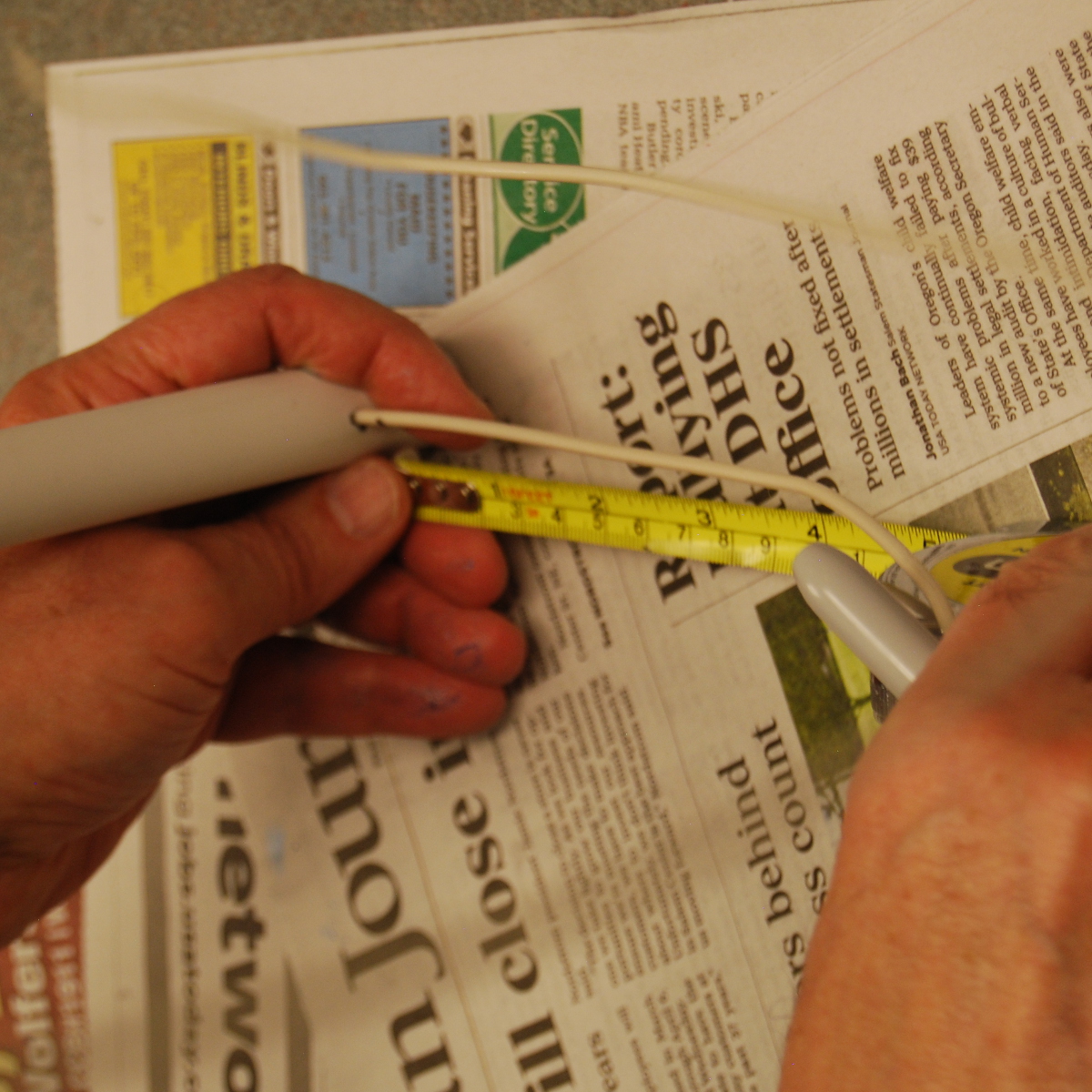
Overlap the wire and solder at 22”. This will be the reflector, which has no coax attached.
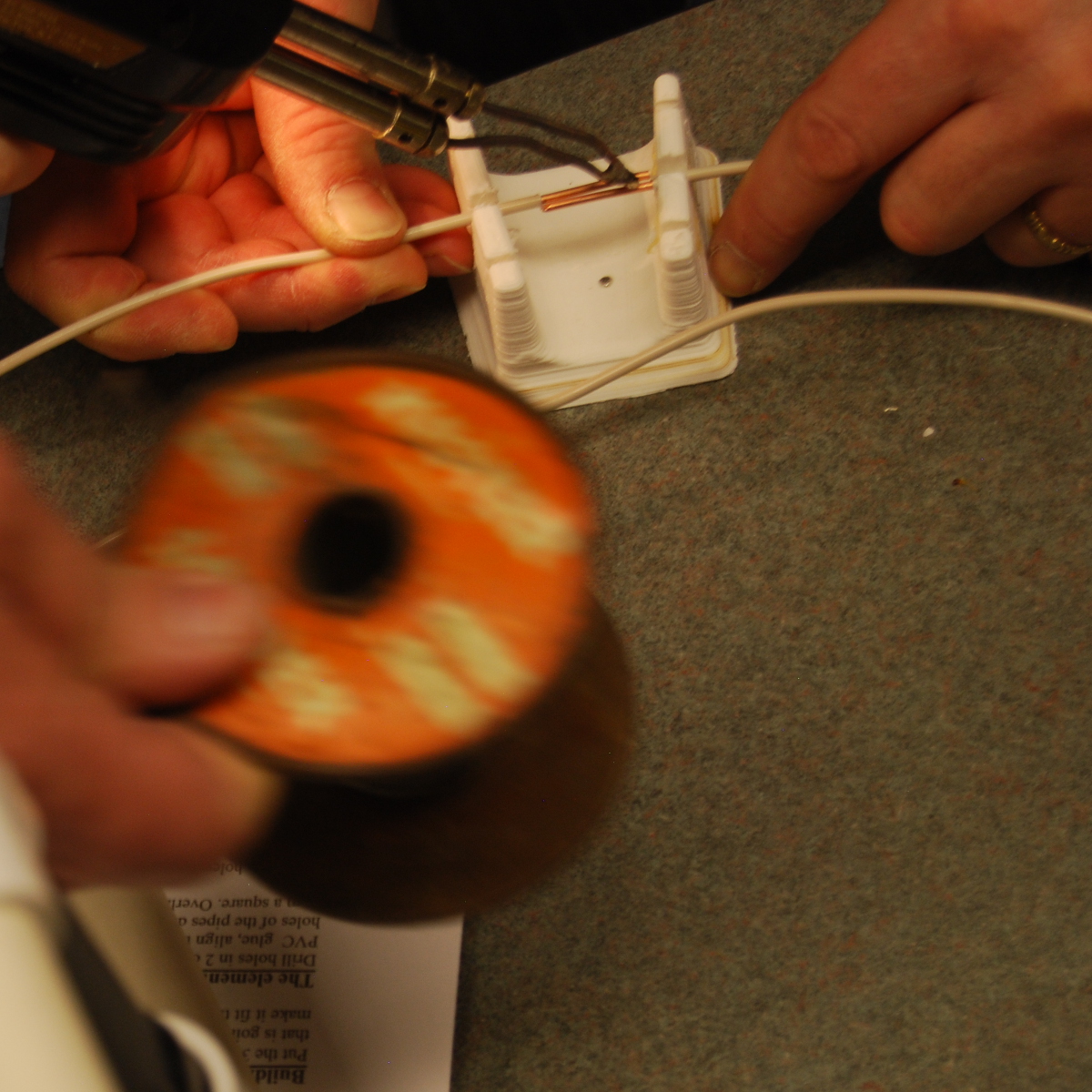
Matching Network
Solder the BNC connector to the driven element, using a scrap of the Romex wire. The fitting should probably be very close to the holes on the support, so temporarily move the wire away from the holes enough to solder without ruining the plastic. Use two of the holes in the connector and thread wire to wrap around the element a few times and solder to connect the ground of the fitting to the wire element.
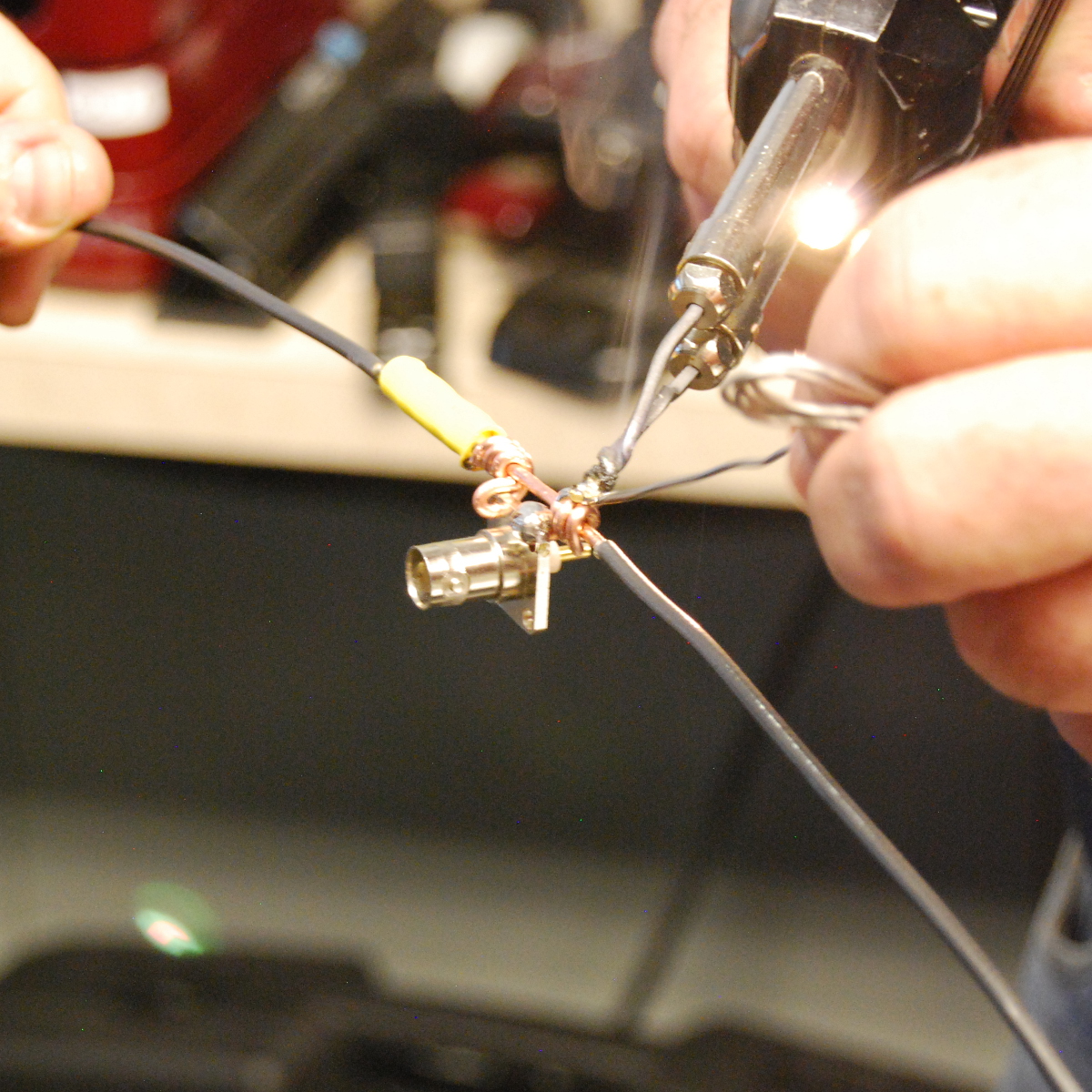
Solder a 10" piece of insulated Romex to the center conductor of the fitting to build a Gamma match. Re- center the element in the plastic mount when it cools. Tape the wire to hold the wire in the center position on the support. Just 1/2" of tape wrapped around each side on the wire will hold it quite well. Fashion the Gamma match 10" piece of wire to go down the element as follows: 7/8" out, bend and parallel the element for 6 1/2", then bend to the element and wraparound the element 4 1/2 turns. Don't cut the wire until the antenna is tuned up, as this is a starting point. After both elements are soldered and shaped to squares, put the elements on the mast and check the antenna on a SWR bridge or antenna analyzer.
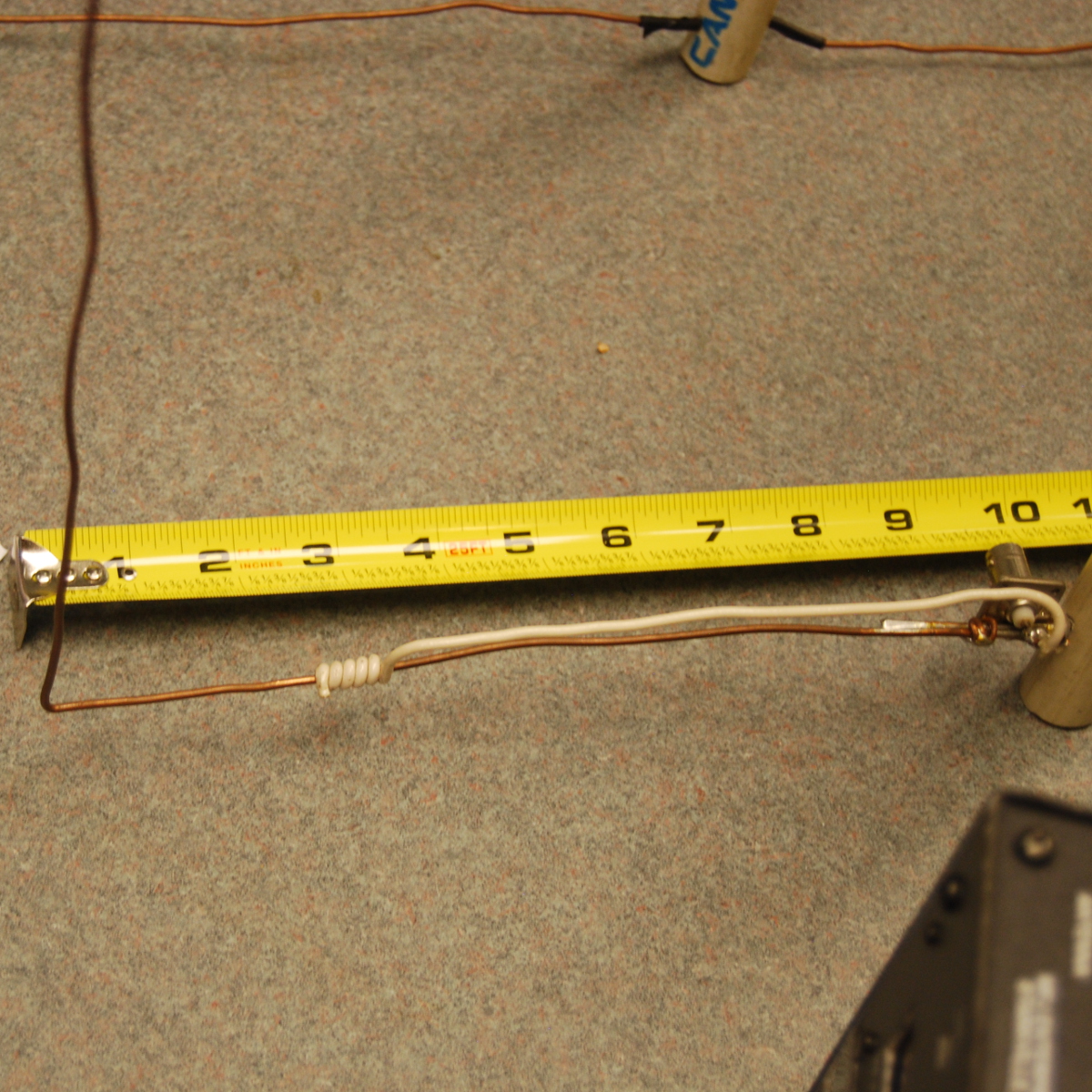
Tuning
Have someone hold the mast upright with the coax attached and all elements in place. Insert the meter and move the matching wire to reduce the reflected power to a minimum. First, move the wrapped section in and out a bit, to look for the low reading. When the best reading is found, try to unwrap and wrap the turns 1/4 at a time to find a lowest reading. If a near perfect reading can be made, cut the wire close to the wrap. Recheck and now try to move the parallel section a bit in and out along the element to get the very best reading. Use suitable glue, such as Q dope, hot glue, or epoxy to secure the wrapped section.

This antenna should tune with 1:1 results or close. Do not use an antenna that reads over 2 on your HT for long periods of time.
Other Frequencies
If you wish to build for another band, here are the changes:
- The 122 MHz. design is a 103 1/2" reflector and a 96 3/4" driven element. Use a 12" spreader.
- The 150 MHz. design is a 84" reflector and a 78 3/4" driven element. Use an 8” spreader.